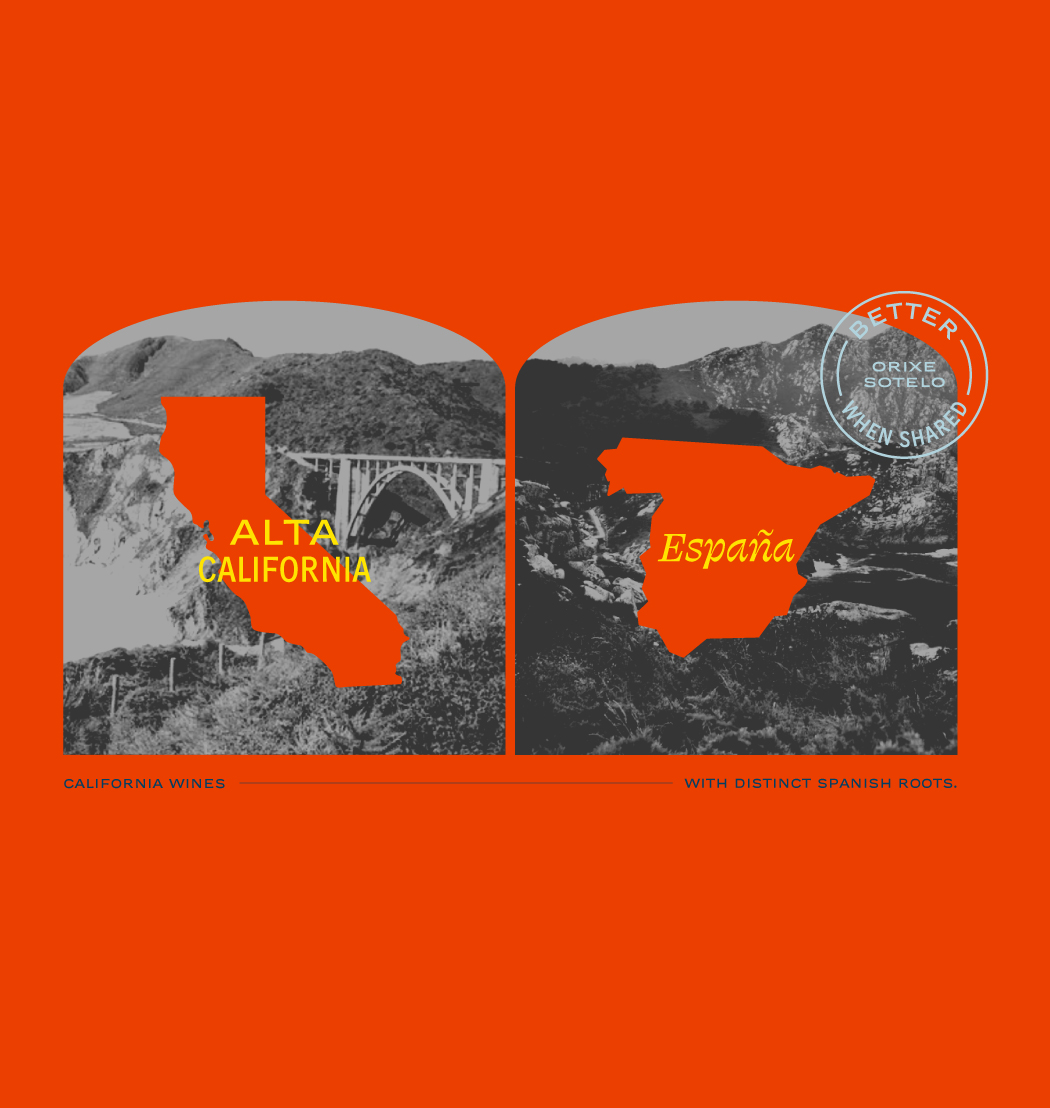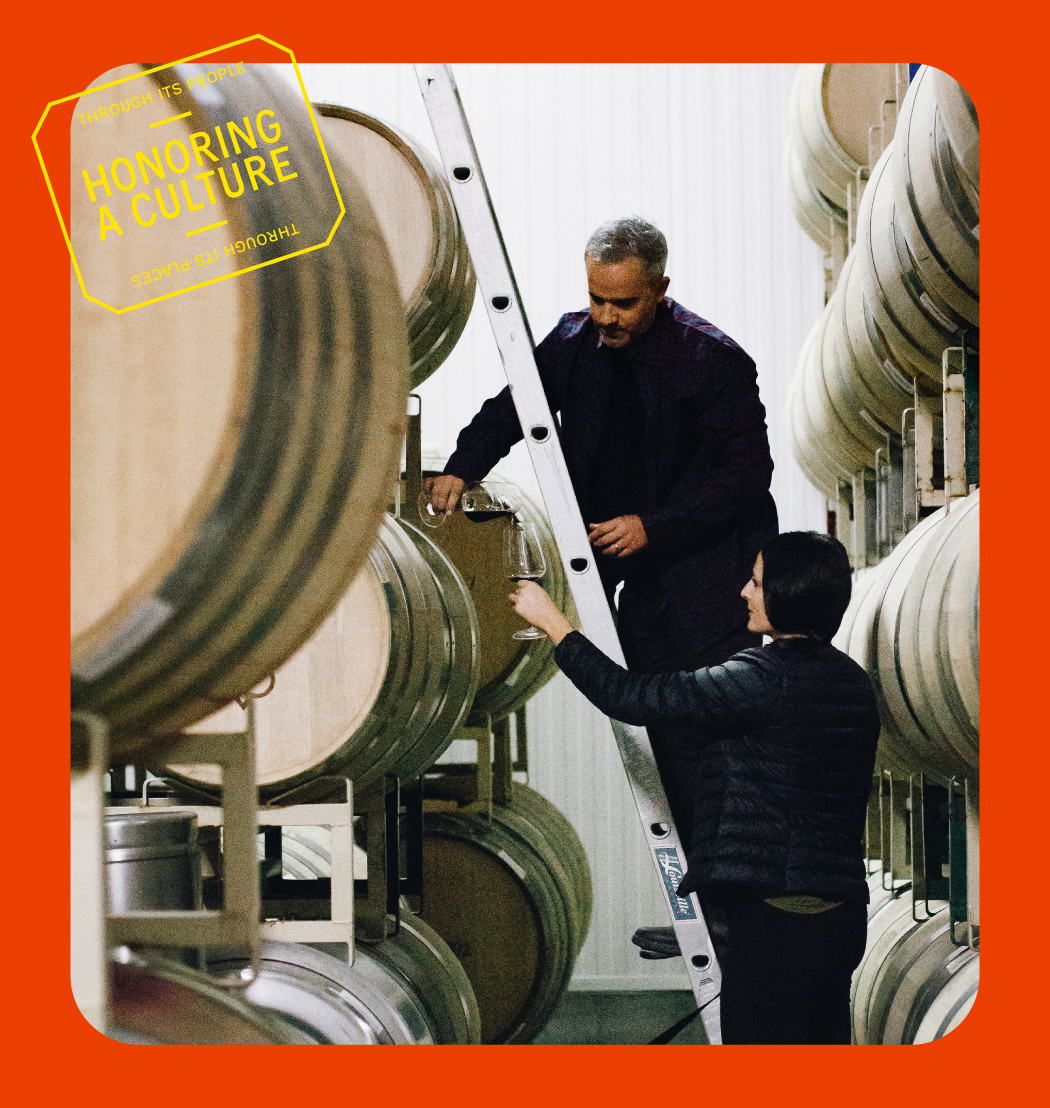History

Our roots and story
With wine, every bottle you open holds a story. It tells you about the grapes, the vineyard, the geological history of the winegrowing region, the people involved in the farming, and the crafting of the wine.
Scroll down to get a taste of where we come from
spain
Country in Southwestern Europe with some pockets of territory in the Mediterranean Sea, offshore in the Atlantic Ocean and across the Strait of Gibraltar.
We found inspiration for O.S. while tracing back Gustavo’s family name to the arrival of Spanish conquistadores in Mexico in the 16th century. The ‘Sotelo’ surname comes from the place-name ‘Soto’ in Galicia, Spain. This word translates to a ‘thicket’ or a ‘grove’. This was the initial thread that connected Gustavo to Spain, and led us to explore the stratified history between Spain, Mexico, and California.
Spain holds a vast and diverse viticultural heritage with its own set of unique grape varieties that are native to this land. Some of those varieties, such as Tempranillo and Albariño, already exist in the U.S., but there are so many more cultivars native to Spain that we believe have the potential to make exceptional wines - if we are brave enough to grow them in California.
Gustavo’s passion for Spanish cultivars was further cemented after he worked a production harvest in Ribera del Duero at Bodegas Mauro in 2014. He travelled extensively throughout the region and was able to meet notable Spanish wine producers, to learn about their craft, expertise, and winemaking traditions. What also always stayed with Gustavo was how similar the topography and coastlines of Spain were to home back in California. This is a theme we explore not only in our grapegrowing and winemaking, but also in our branding through stereographs, which you can read about towards the bottom of this page.



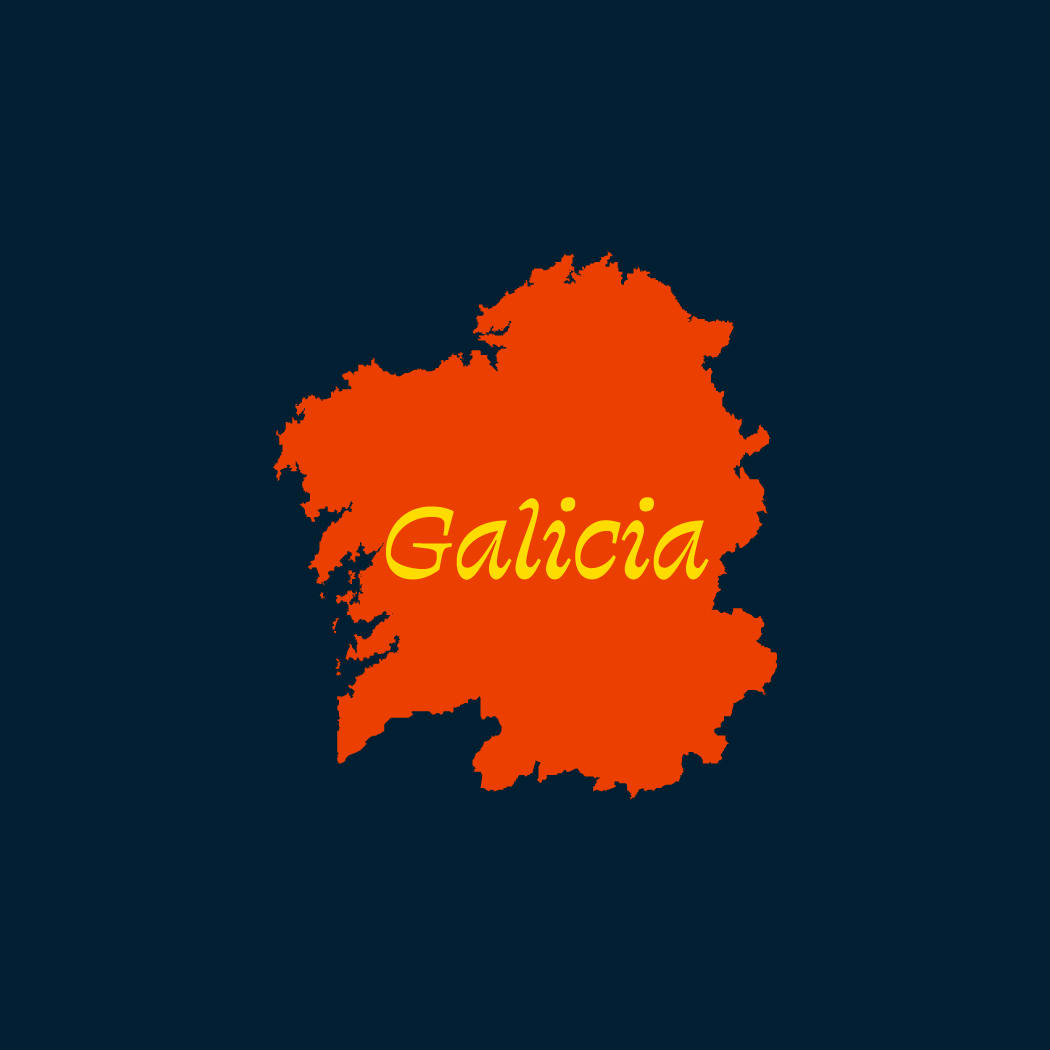
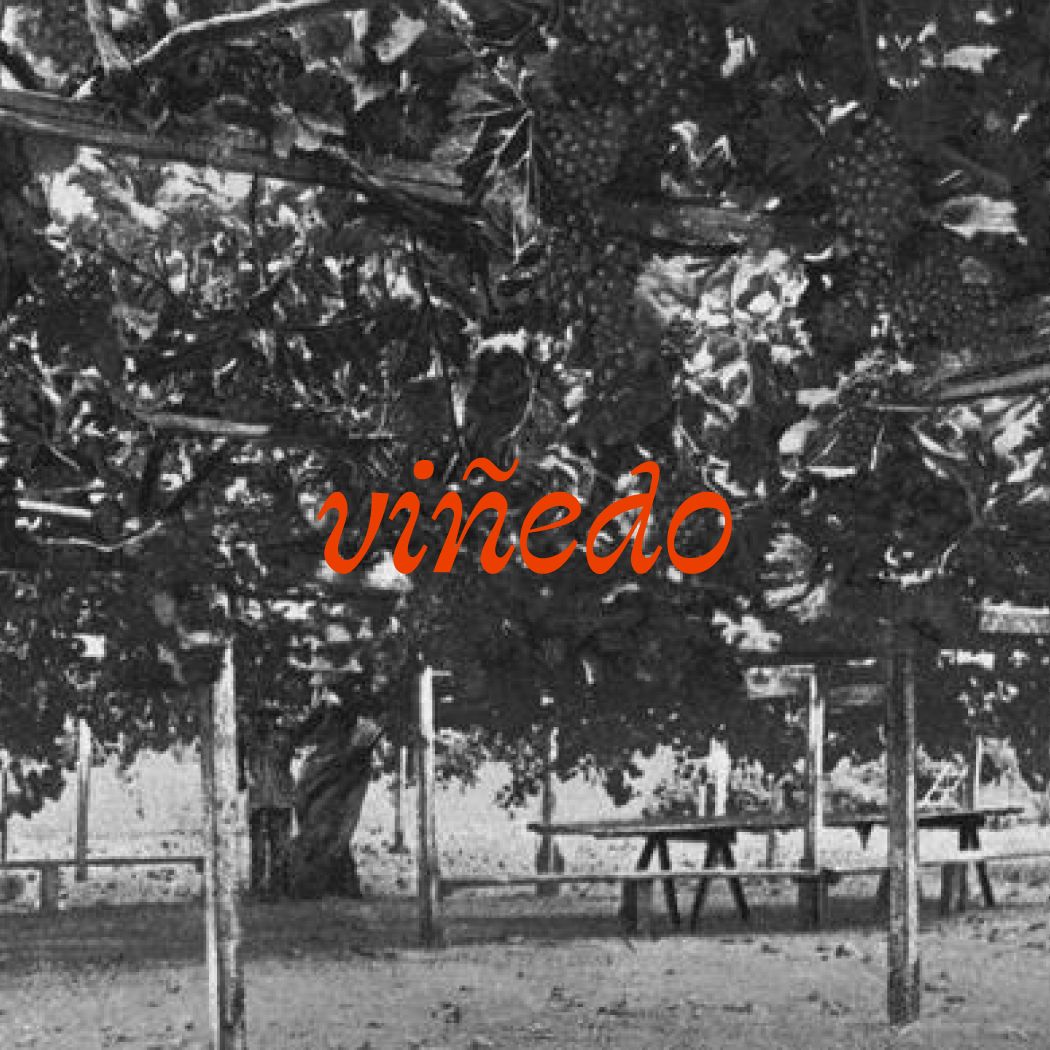

california
Alta California, also known as Nueva California, was a province of New Spain.
Alta California was established as a Spanish territory in 1804 when the Dominican missions were separated from the Franciscans. This was the formal division of Alta California and Baja California. The Spanish missionaries were the first to bring the culture of wine growing to the new territory, with the introduction of the Spanish grape Listan Prieto. The grape, later known as the Mission grape, was widely planted throughout the territory to be used for the production of sacramental wine.
Spain retained control of this territory until Mexico gained its independence in 1821. After their independence, the newly established Mexican state was involved in a war with the U.S. Not too long thereafter, Mexico lost a vast amount of its territory north of the Rio Bravo, which is now present day California, Arizona, New Mexico, and Texas, among other states in southwestern U.S.
During the 1850’s a wave of European immigrants fleeing social and economic turmoil in their native countries began migrating to Alta California. These European immigrants are largely responsible for the first real renaissance in California’s wine industry. The phylloxera outbreak of the late 1800’s along with the temperance movement and prohibition act of 1921, hindered the evolution of California's burgeoning wine industry. It was not until the 1960’s that the industry began to see a new era, driven by new French cultivars being imported to California.
Our vision with Orixe Sotelo is to write a new story in California’s viticultural history; a new renaissance where Spanish grape varieties are grown to capture a unique essence of California's vast terroirs.

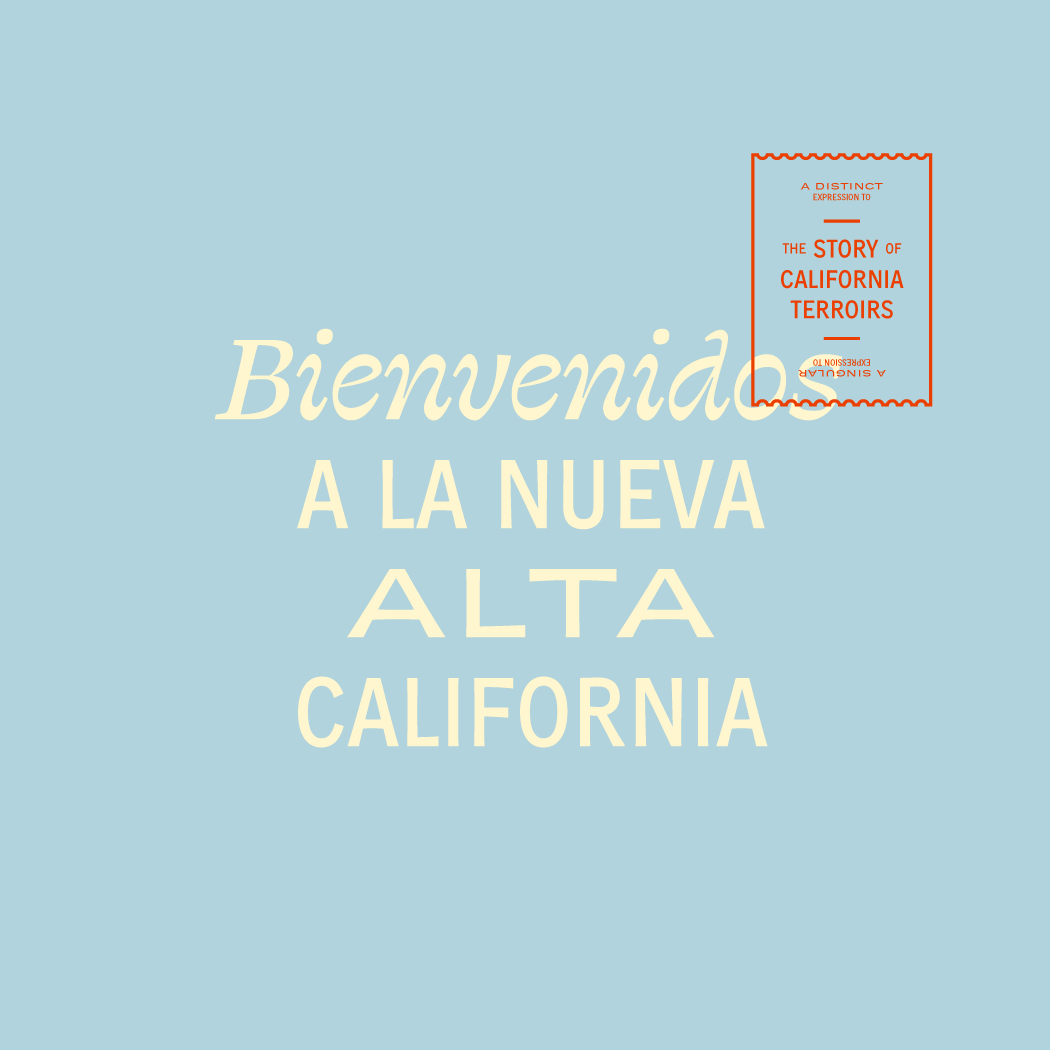

our blend
Stereographs are made with two almost identical photographs. These are set side by side on a slide to be viewed with a stereoscope.
The stereograph was first made in the 1850's right around the time when the first renaissance of California viticulture was happening. When viewed through a stereoscope, two photographs next to each other appear three-dimensional, an awe-inspiring illusion for anyone during that time. Through this illusion, the mind feels its way into the very depths of the picture.
The stereograph has become a metaphor for Orixe Sotelo. Our wines come from a land that we already know, California. By adding Spanish varieties & Iberian enological influences, just like a stereoscope, these elements add a new dimension and wider lens on California wines.
